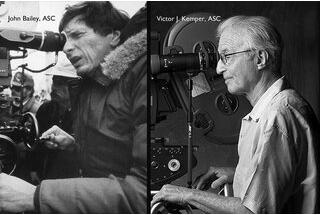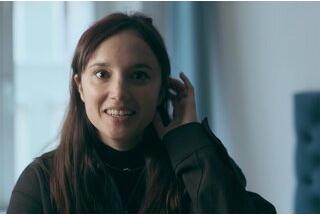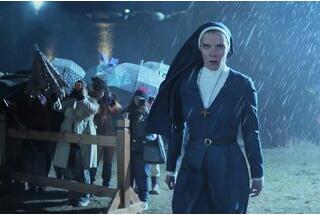Cinematographer Sturla Brandth Grøvlen, DFF, talks about his work on Gunnar Vikene’s "War Sailor"
"Journey to the End of Hell" by François ReumontHow did you end up on this film?
Sturla Brandth Grøvlen : It was through Maria Ekerhovd, one of the film’s producers. Maria also produced Les Innocents, by Eskil Vogt (Un certain regard at Cannes 2021) which I shot as well. She suggested I read the script and meet with Gunnar Vikene. I must admit that it took me a bit of time to accept the film... As I read it, the project appeared extremely ambitious and I was skeptical about the film’s viability, which was concerning especially because the project would require several months of work from me. The other thing that bothered me was the film was contributing to the annoying inflationary trend in Norwegian cinema when it comes to World War II films! And then I met the director, who reassured me by explaining very clearly to me that his film was above all a chronicle of civilian life during the war, and ultimately not really a war film.... An intimate story in which the characters struggle to make the right decision in the midst of indescribable chaos...
And you never see the enemy... Well, when you do see him, he’s coming to help!
SBG : Yes... you know, this scene was inspired by eyewitness accounts. People have often mentioned the name of German submarine captain Reinhardt Hardegen. He was known for having sunk 19 commercial ships and then rescuing the shipwrecked crew afterwards. It’s like the story of the deserter who became a classical dancer in the USA before being caught by the Norwegian secret services and sent back to the front… Or the accidental bombing of the school in Bergen, which was a tragedy witnessed by a member of the director’s family. In the end, there are no good guys or bad guys. This is a film without a “hero” in the most classic sense of the term. This authentic aspect is what made me decide to make the film, along with my feeling of the importance of passing on these pieces of history given the current context of war at the gates of Europe.
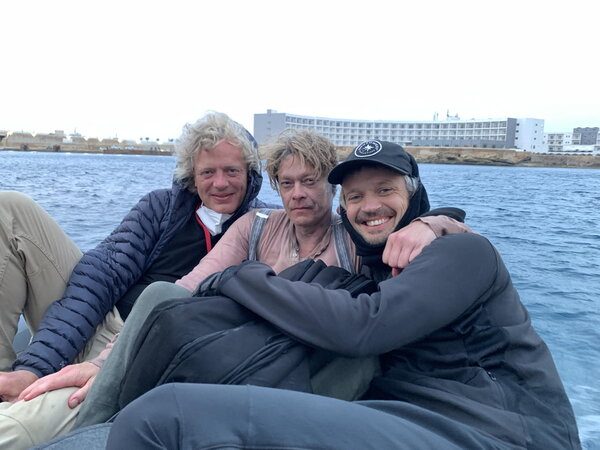
What was the film’s budget?
SBG : The film had a budget of 10 million Euros. Which was quite comfortable. I believe that it was one of the biggest budgets ever in Norwegian cinema. The difficulties came mainly from having to organize shooting in three different countries (Malta, Germany and Norway) during Covid. It was a real headache because of each country’s quarantine rules, not to mention the routine of daily testing.... Really, it was something that I wouldn’t want to experience a second time! In all, we spent almost three months preparing the film, then committed to 60 days of shooting spread over almost five months. This was because of the different seasons we had to portray in the second part of the film. In terms of the work plan, we started with the sequences shot in Malta, and in particular all the sequences at sea, including that of the shipwreck. We then went to a studio in Hamburg, and finally we finished the film in Bergen and its surrounding area for the exterior scenes and the country house that Cecilia and her children move into.
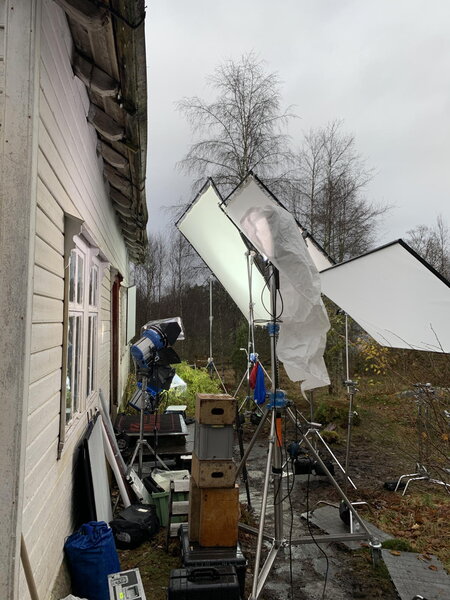
What were your visual choices?
SBG : My idea for the film was to offer unity. I used a simple Bausch & Lomb Super Baltar series despite the different eras and the different tableaux detailed in the script. It was a really dense story, and I was afraid of complicating things too much by wanting to play on the image of a given portion of the film. I wanted to propose a kind of simple and clear framework, remaining most of the time as close as possible to the characters, with some variations in the second part, especially when Alfred’s character is no longer present. The camera then becomes a little more static, the focal lengths a little longer. As if to indicate that the danger has passed. A decidedly calmer atmosphere.
The film is sometimes reminiscent of “Deer Hunter”, especially the second part...
SBG : Yes, Michael Cimino’s film often came up in our discussions. Particularly with regard to its dramatic structure, and because of its portrayal of PTSD. In Norway, this condition is officially called “war sailor syndrome”. Gunnar also has a lot of experience making documentaries under his belt, and that’s where we looked more for inspiration. In particular, I remember a short documentary film about forty minutes long called The White Helmets, which follows the daily work of volunteers in Syria in 2016 (directed by Orlando von Einsiedel). Our idea was to offer a film that is quite modern in its form, despite the very classic subject and storyline.
John Christian Rosenlund, another of your Scandinavian colleagues, often speaks of the trap of period films... what do you think?
SBG : Yes exactly. Falling into the trap of costumes, of beautiful lighting... I tried to stay very close to the characters, to keep myself in their intimacy, as simply as possible. Shoulder camera has pride of place in the film, and in my entire career, I’ve never had such a close relationship with the actors. Especially with Kristoffer Joner, who plays Alfred. Kristoffer is one of Norway’s best-known actors and he was very intrigued to see me working like this. We talked a lot together about the camera, the cinematography and how each situation, each scene was shot. It wasn’t that we improvised together, but rather we gradually built up a kind of common language between camera and actor.
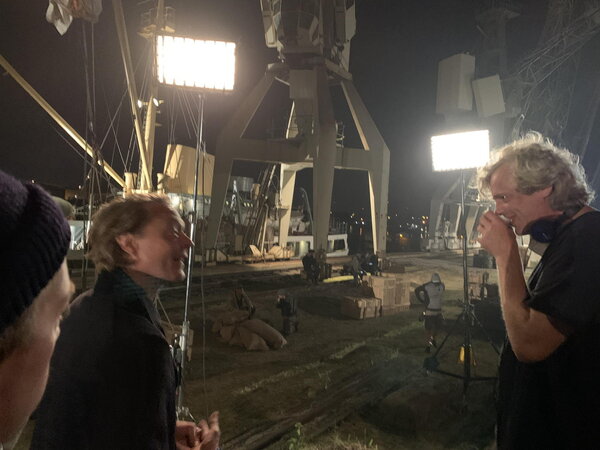
Let’s talk about the "piece de resistance", the big shipwreck sequence in the middle of the film...
SBG : I had already had experience shooting scenes on a small boat at sea on Wendy (Behn Zeitlin, 2020). On this film, this sequence was shot on the high seas over a nearly weeklong period in Malta. We spent a lot of time preparing things, especially figuring out where to place the crew, by storyboarding everything. Because we also had to integrate the special effects that would be added into many shots, such as smoke, sinking ships, explosions... it was really a new experience for me to have to manage so many parameters at once. As for the set-up, I opted most of the time for a crane equipped with a Hydrohead remote head (water resistant), which allowed me to stay just above or below sea level most of the time. The rest of the shots, especially on the life raft, were shot with a shoulder camera as on the rest of the film. This is a slightly more flexible configuration, even though you can easily get in one another’s way in such a tight space. Among the shots I’m quite proud of, there’s this 360° circular movement around the raft, for example, which is an idea I proposed to Gunnar, and which I’m glad he chose to include in the film.
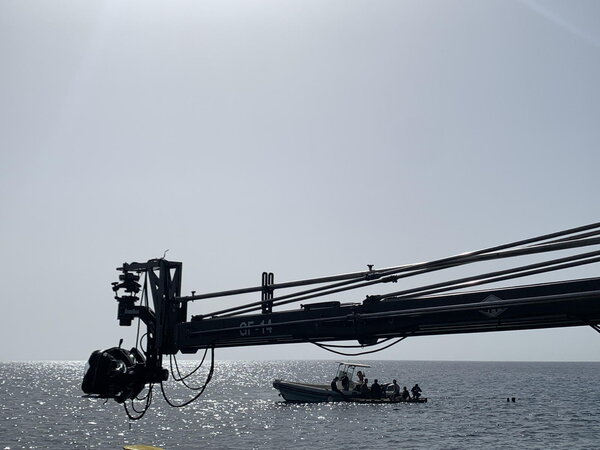
What about the light of the North Atlantic?
SBG : The light of the Mediterranean Sea off Malta is obviously not at all the same as the North Atlantic off the Canadian coast. Moreover, the period in which the scene takes place in the film is autumn... needless to say, we didn’t wait for the clouds to start our shoot!
Most of the work was done in postproduction, by cooling the image, by desaturating and by limiting the contrast. Anyway, everything in these sequences was shot in natural light, without spotlights. Finally, with hindsight, I must admit that it was still much easier to work without wind and with full sun than in more realistic maritime conditions. I was personally relieved when my mother said to me as she walked out of the film’s premiere, “You poor thing, what a rotten time you had on that raft!” I imagine it was a sign she’d believed it…

How did you handle the German submarine?
SBG : The submarine is quite real. We took advantage of a fake floating submarine built in Malta for the needs of the TV series “The Boat” which is based on Wolfgang Petersen’s film. It was very convenient, because it corresponds exactly to the model of German submarines of that period!
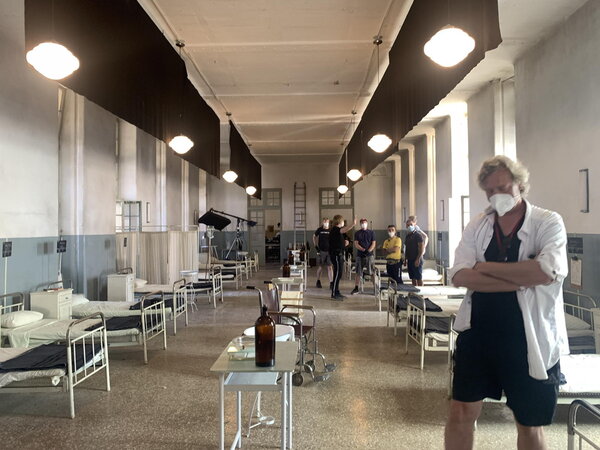
After this grueling scene at sea, the film goes in another direction after the stay in the military hospital...
SBG : The scene facing the doctor was also shot in Malta, during the first weeks of our shooting schedule. It was naturally a very important pivotal scene. As Gunnar and I worked on finding the visual idea that would guide us, he suggested that I film the entire scene from behind the actor. This is in order to somewhat hide Alfred’s emotions as his world suddenly slips away from under his feet. We still took a close-up of him to protect ourselves, which the editor decided to use at the very end of the scene, but we did choose this rather radical approach to film this moment. The lighting ambience, which is very dark, seems to catalyze this man’s destiny at the very moment where he gives up. The film then takes a 180° turn, with a major change in narration.
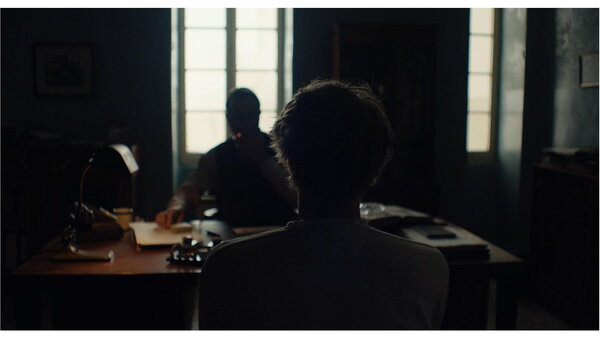
And the scene where Alfred disappears into the fog?
SBG : This scene was not written that way in the screenplay. Originally, we were supposed to follow him after he left the military hospital, and we end up with him at the edge of a cliff, contemplating the sea...
I was not completely convinced by this purely descriptive and realistic way of approaching the scene. I had the feeling that we had to be a little more inside his head, without knowing exactly if we were in reality or in the dream. I thought it should be more mysterious, too, contrasting sharply with the preceding scenes (the nervous breakdown in the loo). I proposed this solution to Gunnar, it resembles a very dreamlike scene in The Others, by Alejandro Amenabar (2001, cinematography by Javier Aguirresarobe). It’s shot in a very basic way, in a small studio full of smoke...the actor just walks away and disappears.
Apart from the shipwreck sequence, was there another challenge for you?
SBG : Perhaps the sequence following the bombing of the school... it wasn’t easy to ensure continuity between all the shots, between those shot in a museum that resembles the school a bit for the first shots when Cecilia is running around in panic looking for her daughter), and others shot in a vacant lot filled with debris, embellished with a few backdrops to evoke the ruins of the foundation. Just coming up with something authentic using such disparate elements was a real challenge in itself.
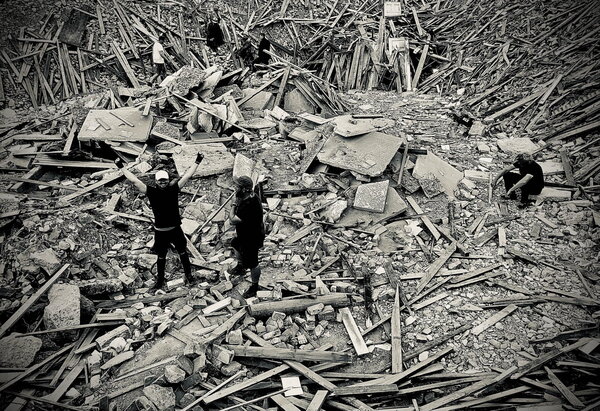
How did you deal with aging on screen?
SBG : The option of using other actors for the 1970 scene was never considered. It was impossible for us to imagine not filming with them, clinging to their faces, their gazes as we did throughout the rest of the film. I think those scenes would have been emotionally very different otherwise. As Pal Sverre Hagen (Sigbjorn) had already been aged in a previous film using prosthetic make-up work, he was the one who put us in touch with our very talented Danish make-up artist... after a few screentests, we found that it worked very well, and he joined us for two days to shoot this sequence in the studio. Contact lenses were also used to age the actors’ eyes, while on camera I had developed a LUT especially for this scene, and additionally the set designers worked to create pastel colors for their apartment. In terms of staging, Gunnar had a very precise vision for this scene. In addition to the layout of the rooms, to which he was particularly attached, the color palette was directly inspired by his childhood in Bergen.
As you can see in the camerawork, we placed Alfred in front of a wall, with family photos behind him, while Sigbjorn is in front of a window, with a view out of a window (made from a very large format photo print). This was a way of visually portraying the opposition between the man who ended up remaining involved in the life of his family, and the other man who, as fate would have it, never formed any strong emotional bonds…
What did you learn on this film?
SBG : Above all, I came away from the film with the memory of the great trust that Gunnar Vikensen placed in me. This film was an opportunity to often discuss ideas with him, and he is someone who has a gift for choosing ideas and then taking them further by integrating them into his directorial style. His attitude allows you, as a cinematographer, not to censor yourself and to trust your intuition even more. I’m also very grateful to have been heavily involved in steps that I don’t usually get to participate in, such as supervising the special effects or editing, which I was often invited to participate in. You know, you learn so much as a cinematographer during these post-production stages! Our professions should always work hand-in-hand with one another.
(Interview by François Reumont, and translated from French by A. Baron-Raiffe, for the AFC)
 En
En
 Fr
Fr
